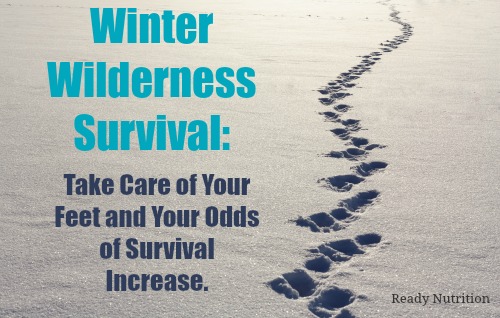
What is Immersion Foot?
This medical issues defined as “damage to the foot owing to continued exposure to water or to moisture, e.g., hiking through streams, mud, or puddles,” (Taber’s, 19th ed. pg. 1019). Symptoms mentioned are numbness, tingling, and cramps within the legs. Sounds simple enough. There are other complications, especially depending on the exposure time and the temperature, two of the main factors that determine exactly how severe a case one will experience.
Immersion foot is also known in the vernacular as trench foot, labeled as such during World War I when “doughboys” (American GI’s) suffered from it while fighting in the trenches (trench warfare was predominant then) of Europe. The greatest short-term complications are as follows:
- Blistering and “pruning” (withering) of the bottoms/soles of the feet
- Raw rubbing and cracking of the toes and the membranes/skin between the toes
- Sloughing off of the bottom layer of the soles from movement after wetting
- Incapacitation: inability to walk
- Local hypothermia
Long-term complications are much more serious, and some of them are as follows:
- Necrosis – tissue death from sloughing and lack of circulation
- Secondary Infection: from long exposure to water/wetness, with athlete’s foot or even gangrene arising (the latter very common during World War I with the doughboys).
- Prolonged/permanent incapacity/inability to walk.
Preventative measures are the key, but first a little first aid. When your feet are not in the condition to walk, don’t push the envelope: take a break and baby your feet. First, follow JJ’s simple rules:
Always have a dry pair of boots in your backpack and at least 3 pairs of socks.
Some may complain that such a precaution adds too much weight. Bunk. It pays for itself the first time your feet become soaked without warning. It does not have to go to immersion foot…dry your feet and change out your footgear! It isn’t that much weight…and you can carry a lighter pair of boots, and thick spare socks. You’ll have to dry the other pair (the wet one) out by a fire, anyway. A pair of jungle boots and two pairs of wool socks will go a long way.
Bring plenty of foot powder with you and powder up those “dogs” when they’re wet. There are plenty of good ones out there that will stay dry a long time. Also, you’re going to need to make a shelter of some kind if you don’t have a tent and you’re just hiking. The day hike can turn into a survival epic if you break through the ice of a creek. Bring a poncho (military issue if possible) and five (5) bungee cords to construct a temporary shelter. Four corners, grommets and bungees, stretched to four trees, and the hood tied off and bungeed to an overhanging branch, and you’ll be all set.
Make sure your waterproof your boots and your socks in Ziploc bags or wet weather bags. Also make sure you have plenty of fire starting materials and that they also are secured in waterproof containers. Moleskin is great for blisters. Buy a nice big square of it and a pair of medical shears/scissors. The moleskin can be cut into doughnuts for the hot spots and as a semi-bandage for the blistered areas that have ruptured.
A word of advice: do not lance the blister (bubble-type) on your feet! The fluid inside of the blister is sterile; once you lance it, you have created an open wound. Then there is an avenue for pathogens, and you have also just removed a natural “cushion” that your body produced on its own. Yes, the blister is a pain in the neck, but it is designed to act as a cushion between the skin and the underlying subcutaneous tissue that is injured.
How to Prevent Food Immersion
Now for the prevention portion. JJ prefers Rocky Gore-Tex boots with vibram soles and at least 1000 grams of Thinsulate within. His socks of choice are cotton against the skin overlapped by pure wool socks. The cotton absorbs the sweat, and the wool wicks it away from the cotton and the skin. In addition are Rocky Gore-Tex socks that are designed to work against the skin; however, the author usually wears thin cotton socks beneath them to prevent chafing. JJ’s backup pair is a pair of winter desert camo (military issue), and six (6) pairs of socks: three cotton and three wool.
Other good types are Belleville, Hi-Tecs (the full leather jobs only), and Herman Survivors as your primary winter boot. These Gore-Tex boots go a long way in preventing immersion foot and frostbite. Remember, if you suffer an injury as such, be sure and check your feet out with the doctor, as these are first aid measures only as discussed in this article. Be safe, and remember to plan everything in advance. When you plan properly, an accident becomes a minor setback instead of a major challenge that can end in disaster. Have a great time, and keep those feet dry and warm!
JJ
This article was originally published at Ready Nutrition™ on November 11th, 2015






